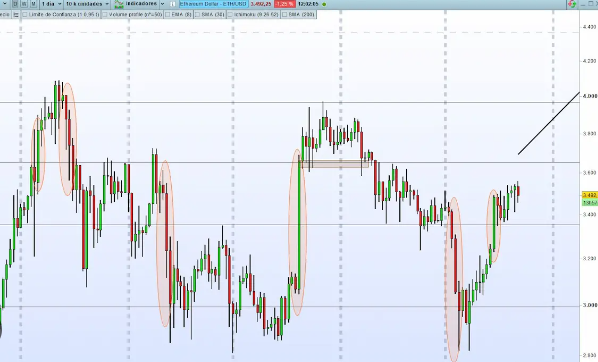How to Trade Forex Using the Stoller Average Range Channel Band (STARC)
Trading forex using the Stoller Average Range Channel Band (STARC) can be a useful strategy to identify potential price reversals and determine entry and exit points. Here’s a step-by-step guide on how to trade forex using the STARC indicator:
- Understand the basics of the STARC indicator: The STARC indicator consists of two bands, an upper band (STARC+ or STARC B) and a lower band (STARC- or STARC A). The STARC+ band indicates resistance levels, while the STARC- band represents support levels. The middle band is a 10-period moving average, often used as a trend indicator.
- Identify potential trading opportunities: Look for situations when the price approaches or breaks through the upper or lower STARC band. These instances can indicate potential price reversals. A break below the lower band may suggest a bearish trend reversal, while a break above the upper band may imply a bullish trend reversal.
- Confirm with other indicators: To increase the reliability of your trading signals, it’s beneficial to use additional indicators or tools for confirmation. Popular options include oscillators like the Relative Strength Index (RSI) or the Moving Average Convergence Divergence (MACD) indicator. These indicators can help validate the potential reversal identified by the STARC bands.
- Determine entry and exit points: Once you’ve identified a potential reversal and confirmed with other indicators, determine your entry point. For bearish reversals, consider entering a short position when the price breaks below the lower STARC band. For bullish reversals, enter a long position when the price breaks above the upper STARC band.
- Set stop-loss and take-profit levels: To manage risk and protect your capital, it’s crucial to set appropriate stop-loss and take-profit levels. Place your stop-loss orders just above the upper band for short positions or just below the lower band for long positions. Determine your take-profit levels based on your risk-reward ratio or by identifying key support and resistance levels on the chart.
- Monitor and adjust your trade: Once in the trade, monitor price action and adjust your stop-loss and take-profit levels accordingly. If the trade moves in your favor, consider trailing your stop-loss to lock in profits as the price continues to trend.
Remember that no trading strategy guarantees 100% success, and it’s important to practice risk management, including proper position sizing and discipline when trading forex. Additionally, it’s recommended to backtest and demo trade the STARC indicator strategy before applying it with real money in live trading.














5 comments